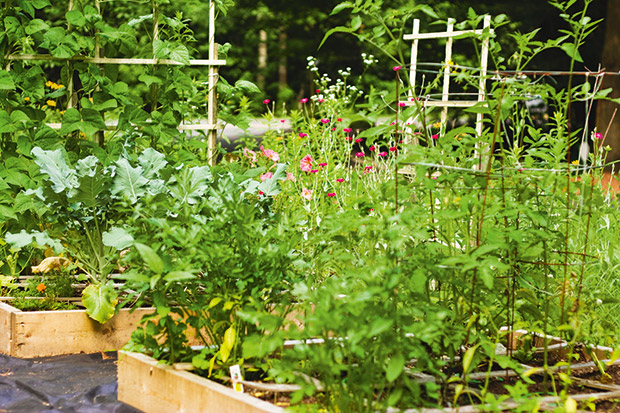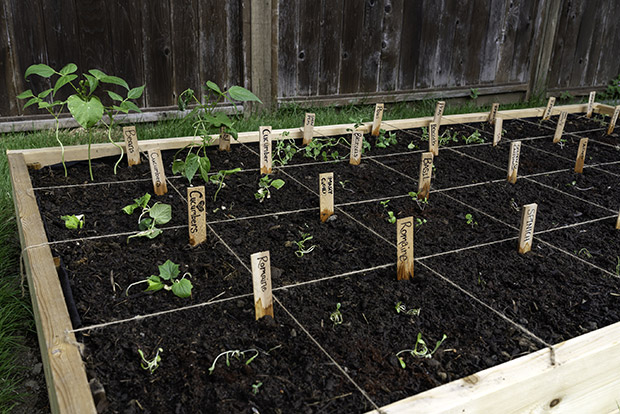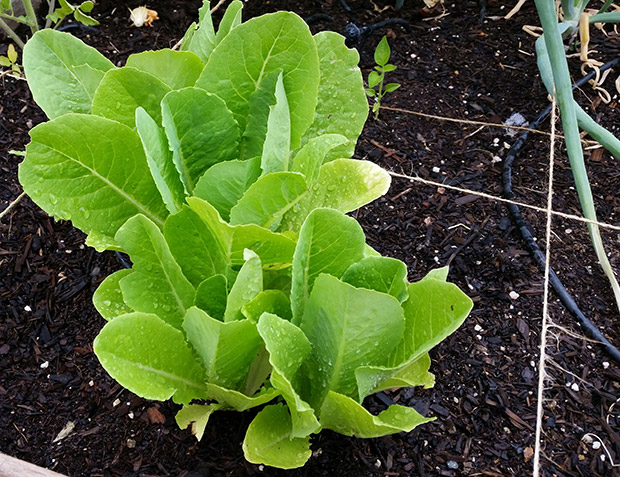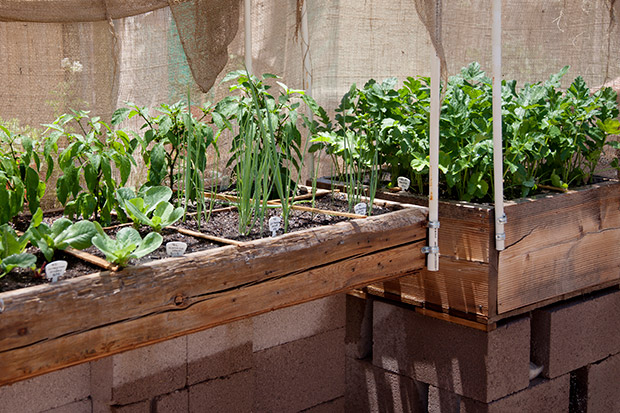A beginner’s guide to square-foot gardening

This grid-driven method of gardening encourages high yield in a small space — wasting not a smidgen of soil.
Words: Jane Wrigglesworth
Raised beds divided into squares with each growing a different vegetable crop are becoming more popular. The method, called square foot gardening, is easy and highly productive though it requires some planning.
The system was developed by retired engineer, efficiency expert and US-based home gardener Mel Bartholomew in the early 1980s. It allows for high yields from common vegetables in small spaces. It’s especially useful if space is lacking as it typically starts with one 4 x 4-foot (1.2m x 1.2m) raised bed which is likely to fit in most people’s backyards. More beds can be added as desired and as space allows. The 1.2m x 1.2m size allows for an easy reach into the centre of the bed for planting and harvesting.
The garden is divided into one-foot (30cm) sections (that’s 16 squares for each bed), and each square is planted with the appropriate number of plants. As an example, if a seed packet suggests sowing carrot seeds 7.5cm apart, that means in just one square sow 16 carrots.

One planting example by Bartholomew in a 1.2m x 1.2m garden with 16 squares is: one broccoli, four leaf lettuces, nine bush beans, 15 small carrots, one cabbage, four Swiss chards, nine spinach plants, 16 radishes, 1 capsicum, four marigolds, nine beetroots and 16 onions.
Let’s do the math. That’s four seeds across (30cm ÷ 7.5 spacing = 4 seeds) and four seeds down. So, 4 x 4 = 16 carrots in one 30cm square. If planting beetroot at, say, 10cm apart, one can plant nine beetroot plants per 30cm square (30 ÷ 10 = 3, then 3 x 3 = 9). Once the carrots and beetroot are harvested, plant something else in their place.
For larger plants, such as tomatoes and eggplants, plant just one crop per square. Extra-large crops such as courgettes, which like to spread out, need more than one square. Square-footers advise planting these in the centre of two squares, though you will need to grow them up a trellis. I would be more inclined to plant my zucchini in a bed of their own, or large container, or devote at least 6 squares to one zucchini plant in the square-foot system. But Bartholomew says to do it in two, so it’s worth a try.
The continuous planting and harvesting of the square-foot garden means that no space is wasted and, supposedly, no weeds develop like they would in traditional row planting. That’s because there is no bare soil. Even so, if weeds do appear, get rid of them quickly so that they don’t compete with water and nutrients in the small garden.
BUILDING THE RAISED BEDS
Bartholomew’s original square-foot raised garden is timber. However any material, including bricks and corrugated iron, can be used. Anywhere between 20 and 30cm high is ideal, bearing in mind that the lower the bed, the less soil is needed to fill it.
Good-quality soil is necessary when growing and harvesting vegetables grown in close quarters. Plants need to be well nourished. Bartholomew’s specified mix suggested one-third compost, one-third vermiculite and one-third peat moss. For a more sustainable product, coconut coir (available from garden retailers) can be used in place of peat moss. Any good-quality vegetable mix can be used to fill your beds. The latter will also have slow-release fertiliser incorporated.

You can make the grid using sturdy twine, wire, or timber battens, but twine is the easiest.
Bartholomew’s beds have a weed-block fabric under the bed. However I would simply place my bed on the grass, otherwise deeper roots of any perennials planted won’t be able to grow down into the soil and I’d use a layer of cardboard instead of weed-block. The cardboard will slowly break down and allow the roots of vegetables to grow into the soil. Using a wood base on the bed, allows gardening on concrete, but it will bed to be at least 30cm deep for the plants to thrive.
Once the beds are built and the garden mix is added, lay a grid on top that divides the bed into 16 x 1-foot (30cm) squares. Make a grid using sturdy twine, wire, or timber battens. Perhaps the easiest method is to hammer nails at 30cm intervals on the top edges of the raised bed, then loop twine around them and across the bed to form a grid.
If a plant needs a greater depth for its roots, Bartholomew suggests using a topper box. This is simply a 30cm x 30cm box, without a bottom or top, that is placed over one of the squares. The box can then be filled with more soil and planted into.
This works well for potatoes. Plant the potatoes in the base soil, place the topper box over them, then top up with more soil, as if mounding up soil in a traditional garden bed.
PLANTING
For a maximum harvest from a small plot, work out what to plant in each square before planting and when each square will be ready to harvest. Let’s say bush (dwarf) beans go in one square and carrots in another. The bush beans will be ready to harvest in around 60 days from sowing. Unlike climbing beans, bush beans produce their crop all at once and then they’re finished. Conversely, carrots may take 90 days to harvest (read the back of the seed packet for information). Once the bush beans have finished, plant a crop of carrots.
One planting example by Bartholomew in a 1.2m x 1.2m garden with 16 squares is: one broccoli, four leaf lettuces, nine bush beans, 15 small carrots, one cabbage, four Swiss chards, nine spinach plants, 16 radishes, 1 capsicum, four marigolds, nine beetroots and 16 onions.

For smaller beds, simply divide the space by 1-foot (30cm) squares.
It might seem optimistic to plant nine bush beans in one square, and Bartholomew even addresses this in a Q&A on his square-foot gardening method. “It’s just a matter of mathematics and the recommended spacing from the seed company,” he says.
“Seed companies recommend spacing bush beans every 4 inches. That looks like a lot of space in a row, but tends to look a little cozier in one square of an SFG.”
He goes on to say, “Because they are fairly constrained on all sides but not crowded, they plants tend to put their energy in bean production rather than foliage production.”
On the other hand, one broccoli plant is not much at all, but once radishes are harvested, plant another broccoli there. Or if spinach is coming to an end, plant another there. The gist of it is when one square becomes free after harvesting, plant it again with either the same crop or a different one.
An alternative method is to stagger planting from the very start. Plant one broccoli in one square one week, another broccoli in a different square the following week and another in another square the next week, and so on.
Really, it’s a matter of experimenting and seeing what works and what doesn’t. Bartholomew’s method is a good place to start.
MORE HERE

